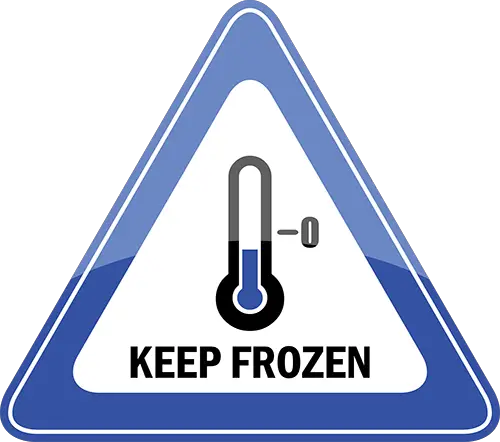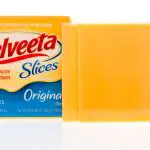Freezing & Thawing Nacho Cheese Sauce (Easy Guide)
One of the most common appetizers at restaurants, parties, and family events is some type of dippable food covered in cheese sauce. Nachos, cheese fries, queso, and other popular appetizers are all made with one star of the show in mind: nacho cheese sauce. But can you freeze nacho cheese sauce to preserve it long-term if you have leftovers or want to purchase it in bulk?
You can freeze your nacho cheese sauce by storing it in freezer bags or airtight containers. Nacho cheese sauce can also be frozen in ice cube trays to create smaller serving portions. Allow frozen cheese sauce to thaw in the refrigerator before reheating on the stovetop or in the microwave.
Though freezing may slightly alter the consistency of the sauce, this article will explain the best way to freeze leftover cheese sauce to keep it as fresh and consistent as possible. It’ll also provide some tips on how to defrost the sauce whenever you’re ready for another cheesy snack.
Nacho Cheese Sauce Ingredients
Nacho cheese sauce is typically made by combining a few different types of cheeses, seasonings, and milk. Although, versions bought from the grocery store usually contain additives that extend the product’s shelf life. However, the main ingredients that affect its ability to freeze well are dairy products.

With the added preservatives, cheese sauces purchased from the grocery store can last in the refrigerator for up to four weeks. Nacho cheese sauce, however, is often sold in large containers, so getting through it in four weeks’ time may be a challenge. Cheese sauces made at home from scratch usually only last about 3-4 days in the refrigerator. That’s where freezing comes in!
How to Freeze Nacho Cheese Sauce (Store-Bought & Homemade)
One of the first things that you should consider when freezing nacho cheese sauce is if the sauce is store-bought or homemade. As mentioned above, pre-packaged nacho cheese sauce purchased from the store will have additives and preservatives included in the ingredients. Differentiating between the two will ensure that your cheese sauce lasts as long as possible.
Regardless of whether it’s made at home or bought at a store, the best temperature to freeze nacho cheese sauce is 0℉ (-17℃). Freezing at this temperature will prevent the cheese sauce from being exposed to any bacteria that may lead to contamination.

Tips for Freezing Homemade Nacho Cheese Sauce
Here’s how to freeze a nacho cheese sauce made from scratch:
- Remove any salsa, guacamole, or broken chips from the nacho cheesesauce. Leaving these in there can take away from its quality later on.
- Make sure the cheese sauce completely cools down to room temperature before attempting to stick it in the freezer. This is a critical step to guarantee good quality when you reheat it later.
- Spoon the nacho cheese sauce into either an airtight container or a freezer-safe bag. If cheese sauce isn’t something you consume regularly, you can separate the sauce into multiple containers or bags based on your typical serving size. It’s not recommended to refreeze nacho cheese sauce after it’s been thawed and reheated, so this can help prevent you from running into that issue.
- Properly seal and place the nacho cheese sauce in the freezer. If you choose to store your cheese sauce in a container, pop the lid on and ensure it’s completely closed. If freezer-safe bags are your storage of choice, then squeeze out the excess air and completely seal the bag.
Homemade nacho cheese sauce can be stored in the freezer for six months.
Tips for Freezing Nacho Cheese Sauce From the Grocery
The most significant difference in the freezing process for homemade cheese sauces versus those from the grocery store is that brand-name versions are typically sold in glass or plastic containers. It’s crucial that you don’t attempt to freeze the sauce in its original container because they aren’t freezer safe.

Instead, just as you would with a scratch sauce, spoon the product into an airtight freezer-safe container or freezer-safe bags.
If using bags, it’s usually a good idea to double bag the nacho cheese sauce to prevent freezer burn. This can also provide some added protection against accidental spillage in your freezer making a mess. Just be sure to squeeze out the excess air and completely seal the containers before putting them in the freezer.
Another portioning idea is to freeze the sauce in an ice cube tray initially. Freeze the sauce for about 2 hours in the tray, and then transfer the cubes to a freezer-safe bag and put them back in the freezer.
Cheese sauce bought at the store can last at least 6 months and even longer; however, the longer it’s frozen, the less likely it’ll taste the same as it did before.
Defrosting Frozen Nacho Cheese Sauce
The best way to defrost nacho cheese sauce is to take it out of the freezer and place it in the refrigerator overnight. If you forget to do this the day before, don’t worry; as long as it has at least a few hours to thaw, it should be fine. Doing it the night before is just the best way to ensure the sauce has a chance to thaw fully before attempting to reheat it.
When you take the nacho cheese sauce out of the refrigerator, you’ll most likely notice it doesn’t look as appetizing as it did before. That’s because the fats and milk tend to clump together and separate themselves from the other ingredients when the cheese freezes and then defrosts.
This issue can be quickly resolved by whisking or stirring the ingredients together. Once combined, put the nacho cheese sauce in a microwave-safe bowl and microwave. Every thirty seconds or so, take the sauce out and stir to be sure it heats evenly.
You can also put the cheese sauce in a pot on the stove on low heat. Let it simmer until it’s heated all the way through.
Final Thoughts
Nacho cheese sauce is already a fantastic food, but the ability to freeze it and save it for later makes it that much better!
To freeze nacho cheese sauce, simply put the cooled sauce into a freezer bag or airtight container and place it in the freezer. Just be sure to give it some time to thaw in the refrigerator before reheating when you’re ready to eat it again.






